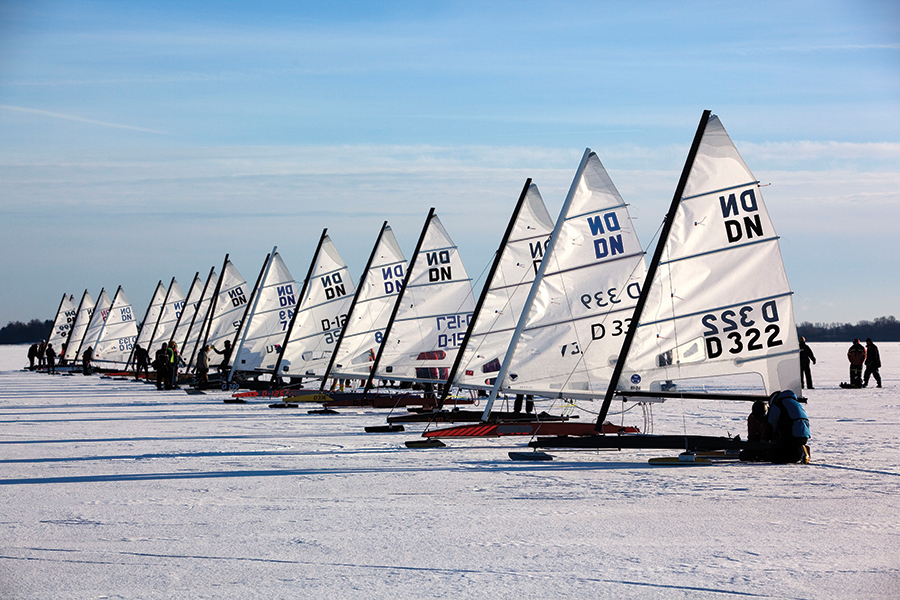Iceboating, also called ice yachting, is a popular winter sport in northern regions of the United States and of European countries. Iceboats are small, speedy craft that resemble sailboats. They perform best in strong, steady winds on large areas of smooth ice. An iceboat can travel up to 100 miles (160 kilometers) per hour.

Iceboats.
An iceboat has a long hull similar to that of an early airplane. Most have frames made of spruce or other strong, light wood. Plywood covers the frame. Some boats are made of aluminum or fiberglass. Most measure between 16 and 22 feet (5 and 7 meters) long.
The cockpit of an iceboat holds one or two persons in a sitting or semireclining position. Under the hull, a steel runner is attached to each end of a crosspiece called a runner plank. A third runner is used for steering. It is fastened to the front of the hull or on a springboard projecting forward of the bow. This runner is connected with steel cables to a handle called the tiller, a wheel, or foot pedals in the cockpit.
A mast of aluminum, spruce, or lightweight industrial material called composite stands in front of the cockpit. Steel cables fasten the mast to the hull and the runner plank. Iceboat sails are made of heavy synthetic cloth. From four to eight stiff narrow strips of wood called battens control the sail’s shape at high speed. Older stern-steering iceboats had about 350 square feet (33 square meters) of sail. Modern boats need only 75 square feet (7 square meters) or less and perform better.
Sailing an iceboat.
An iceboat is started by pushing it across the wind with the sail let out. The iceboater then jumps aboard and pulls in the sail to make the boat pick up speed. An iceboat travels fastest when moving about 15 degrees in the direction of the crosswind.
Iceboaters wear spiked shoes for firm footing to help them push the boat when starting it. Warm clothing is essential for comfort and to prevent frostbite. Goggles shield the eyes against snow and flying ice, and a crash helmet protects the head in case of an accident.
Iceboat races
are held on a course marked by two buoys placed about 1 mile (1.6 kilometers) apart in line with the wind. The boats begin from a standstill at the downwind end of the course. They must pass both buoys counterclockwise, usually for three laps. The National Iceboat Authority sets the rules for races held in the United States. Races are held for various classes of iceboats. Boats of all classes sometimes compete against one another in open races.
History.
The first iceboats probably were used in the Netherlands during the 1600’s. They were sailboats fitted with runners and used as cargo boats on canals. In the late 1700’s, Dutch settlers in the Hudson River area of New York built stern-steering sporting iceboats that could hold six or eight people. These boats traveled as fast as 60 miles (95 kilometers) per hour.
In the early 1930’s, a small, lightweight front-steering iceboat, called a skeeter, was introduced. Improved versions of that model attracted many people to iceboating because of the skeeter’s high speed, low cost, small size, and portability. The most popular racing iceboat is the DN. It is even smaller than the skeeter and easier to transport. Today, iceboating is most popular in the United States, especially on the East Coast and in the Great Lakes region.
